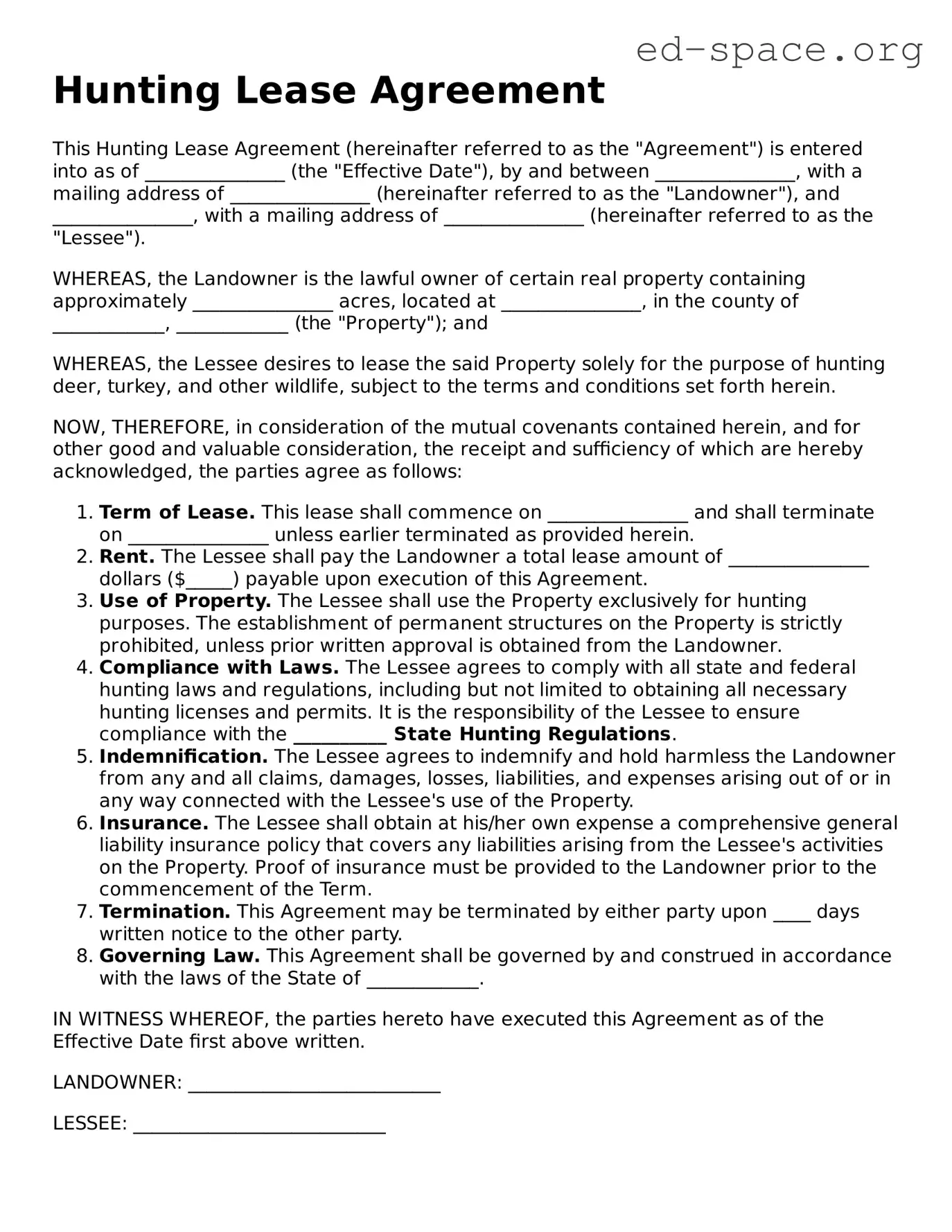What is a Hunting Lease Agreement?
A Hunting Lease Agreement is a legally binding contract between a landowner or the manager of a property and an individual or group (the lessee) that wants to hunt on the property. This agreement outlines the rules, payment details, duration of the lease, and other conditions under which hunting is allowed on the property.
Why do landowners need a Hunting Lease Agreement?
Landowners require a Hunting Lease Agreement to ensure the use of their land for hunting is clearly defined and legally protected. It helps in managing liability issues, setting clear expectations for behavior on the property, determining the types of hunting allowed, and providing a mechanism for receiving compensation for the use of the land.
What should be included in a Hunting Lease Agreement?
A Hunting Lease Agreement should include details of the parties involved, a description of the land to be used, the term of the lease, payment terms, the types of hunting allowed, any restrictions on hunting or use of the land, safety requirements, and what happens in the event of a breach of the agreement. It's also wise to include liability waivers and information on insurance coverage.
How long does a hunting lease typically last?
The duration of a hunting lease can vary widely depending on the agreement between the landowner and the hunter(s). Leases can last anywhere from a day or weekend for short-term agreements to several years for long-term relationships. Yearly leases are common, but the specific term should be mutually agreed upon and specified in the agreement.
Can hunters sublease the hunting rights on the leased property?
Whether hunters can sublease their hunting rights depends on the terms of the original Hunting Lease Agreement. Generally, if the landowner allows it within the agreement, then subleasing may be possible. However, this should be clearly stated to avoid misunderstandings and legal complications.
How is the payment structure determined in a Hunting Lease Agreement?
The payment structure in a Hunting Lease Agreement is negotiated between the landowner and the lessee. It might be a one-time payment for the season, monthly payments, or some other arrangement. The payment amount can depend on the size of the land, the type of game available, and the duration of the lease. Payment terms should be clearly outlined in the agreement.
Is insurance necessary for a Hunting Lease Agreement?
Yes, having insurance is highly recommended for both parties involved in a Hunting Lease Agreement. It can protect the landowner from liability in case of accidents or injuries on the property and ensure that the hunters are covered as well. Often, landowners require hunters to carry a specific amount of liability insurance as part of the lease conditions.
Can the agreement be terminated before the end of the lease term?
Yes, a Hunting Lease Agreement can include provisions for early termination by either party under certain conditions, such as breach of agreement or other mutually agreed upon circumstances. These conditions should be specified within the agreement, including any penalties or refunds for early termination.
What happens if there is a dispute over the Hunting Lease Agreement?
In the event of a dispute over the Hunting Lease Agreement, the parties should first try to resolve the issue through direct communication or mediation. If resolution is not possible, the agreement may outline specific arbitration procedures. As a last resort, the parties may need to resolve the dispute in court. It's important that the agreement includes a clause addressing dispute resolution processes.
